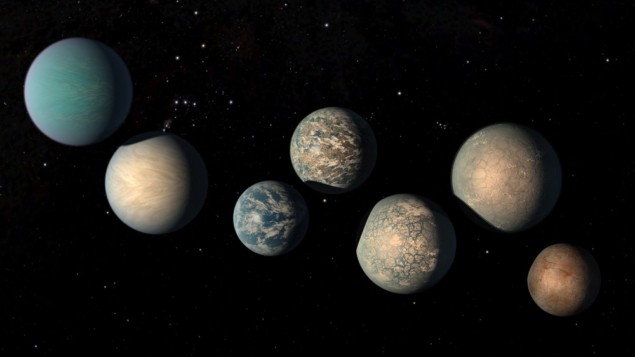
From AbSciCon 2019 in Bellevue, Washington
Tuesday was the second day of the Astrobiology Science Conference 2019 (AbSciCon 2019) here in the Pacific Northwest, and by now everyone has their bearings. There was a sense that today everyone got down to business.
Like any big conference, the attendees here fall into groups. There are the old-timers and leading lights who know their stuff and act much like directors in a corporation. There are the workers – hard core scientists, postdocs and graduate students who are neck deep designing a new instrument, a new computer model or the next telescope. They seem to understand everything. Then there are undergraduates fascinated by space exploration, looking to find a way into this rapidly expanding field. The latter tend to travel in flocks, their mentors never far away.
The field of astrobiology is still profoundly new. The first confirmed exoplanets were discovered in 1992, and over 4000 are now known, with more found nearly every day. Today Karl Stapelfeldt, chief scientist of NASA’s Exoplanet Exploration Program (now that is a sweet position) said the pace is doubling every two and a half years.
Plethora of new missions
A dozen missions, real or conceptual, must have been mentioned on Tuesday. The James Webb Space Telescope (JWST) designed to replace the Hubble Space Telescope, has a current launch date of 30 March 2021. But many here are thinking hard about what comes after the JWST. NASA’s Decadal Survey is starting now, where the scientific community identifies questions, and answering observations, they’d like over the next 10 years or more. Several missions were introduced and discussed here today, all with singular capabilities in various wavelength bands. These include the Origins Space Telescope; the LIFE Mission; LUVOIR-A and LUVOIR-B; HabEX with its unique stellar occulter or “starshade”; the LYNX mission to replace the Chandra X-ray Observatory; and more.

Toxic gases in habitable zone could hinder emergence of alien life
Where will these missions be looking? Everyone’s favourite planetary system to explore, and I do mean everyone, is the TRAPPIST-1 system, located about 40 light-years away. There, seven known planets orbit a cool, “M dwarf” star that is only slightly larger than Jupiter. It is worth mentioning that about 75% of the stars in our neighbourhood are M dwarfs. Because all seven planets transit their star – pass between it and us – we know their average densities. They all seem to have a rocky composition, like the four inner planets in our own solar system. Three of these distant planets are thought to be in their star’s habitable zone, where water could exist as a liquid, considered necessary (but not sufficient) for life – or at least life as we know it here on Earth.
The big idea – but hardly the only one — is to capture the spectra of a transiting exoplanet’s atmosphere as its star’s light passes through it to us. If you think of the “thin blue line” that is our own atmosphere as seen from space, only about 100 km wide, you can begin to grasp the intricate design and subtlety involved in viewing an atmosphere from 400 trillion km. Signals are small, and many transits will be needed. The captured spectra will be analysed for signs of gases like carbon dioxide, water vapour, methane, oxygen and ozone. These might indicate that some form of life exists on a planet – or past life, or an ocean, or the loss of an ocean. As you can imagine, proposals to make such measurements require a great deal of thought, planning, physics, planetary science and computer modelling.
The conference continues until Friday.



